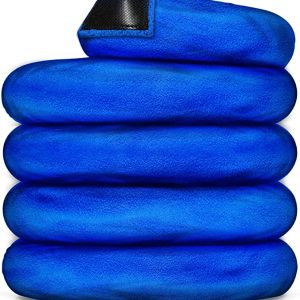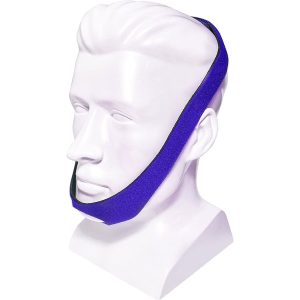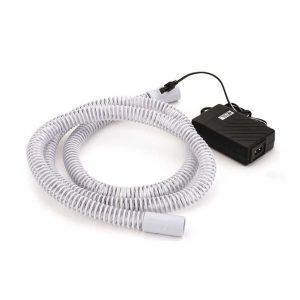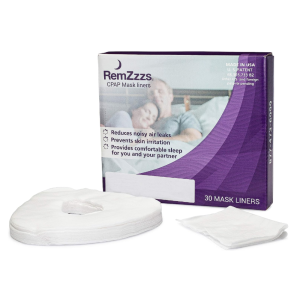Last updated on February 20th, 2024 at 03:26 pm
It can take time to get used to a new CPAP mask.
How quickly you adjust to your CPAP therapy can vary depending on your comfort. One of the most common annoyances when using CPAP therapy is the hunt to find a mask that fits comfortably and stays on the whole night. Your therapy pressure settings, ramp time and mask style can all affect how you feel about your treatment.
How do you keep your CPAP mask on all night? Let’s take a look at some tips for keeping your CPAP mask on.
What is CPAP?
Continuous Positive Airway Pressure (CPAP) therapy is an effective treatment for Sleep Apnoea. A CPAP machine or a Sleep Apnoea machine provides a continuous flow of pressurised air to the user to prevent the airway from closing during the night.
Adjusting to CPAP Therapy can often be a difficult transition before we find a balance between comfort and essential therapy. You might find that you wake up without your mask on. This can be quite shocking, especially if you do not recall taking off your mask during the night. Similarly to sleepwalking, we are unaware of our impulse actions.
Subconsciously, if we find our CPAP mask to be too uncomfortable, this is a normal instinctive response. However, it is a concern because without wearing your CPAP mask throughout the duration of the night, you are still at risk of OSA.
Why is my CPAP waking me up?
There can be many reasons for waking up without your CPAP mask on. It is normally due to discomfort from an unsuitable pressure, causing air to leak up into your eyes, or from a bad fitting mask.
If your mask is too loose, then CPAP air leaks will occur, which can be very uncomfortable. On the contrary, if you tighten your mask too much, then you will experience painful pressure marks on your face.
It is worth looking into your options. Consider whether you have chosen the right sleep apnea mask style and size.
1. Get the best CPAP mask fit
If you find your mask very uncomfortable when you place it on at night, then you might want to consider an alternative. Keeping your CPAP mask on all night can be tricky when you find it uncomfortable.
That is why getting the best fit possible in your mask is essential.
When choosing a CPAP mask, you need to consider your sleeping position and how you breathe during sleep.
Here are some general CPAP mask guidelines:
- Full-face masks: Suitable for those who breathe through their mouth and nose during sleep.
- Nasal pillows and nasal cushion masks: Suitable for those who only breathe through their nose during the night.
You will need to replace your CPAP mask every 6 months to a year, depending on the wear and tear.
CPAP mask parts, such as cushions and headgear, should be replaced every three months.
Tip – Adjust your headgear and the fit of your mask when you’re laid down, as your face changes shape once you’re in your sleeping position.
How do I stop air from coming out of my mask?
If you’re waking up from your mask blowing too much air into your face, it is probably because you have moved in your sleep, dislodging your mask. You often won’t notice if you move sleeping positions that push your mask off.
Nasal masks are easier for side sleepers as these masks are smaller, for example, the ResMed AirFit N30i mask. A trick to combat breathing from your mouth when using a nasal mask is to use a chin strap. This holds your mouth closed throughout the night.
However, there are ways around this; using a CPAP pillow with a full-face mask gives you the freedom to sleep on your side.
When you choose a mask, make sure you use the sizing guide to ensure you purchase the size you need. You can find the sizing guide under the ‘downloads‘ tab on the product page. You will need to print to 100% scale to ensure you get an accurate size.
Watching mask-fitting videos will also help you get the best fit in your mask. If your mask is too big, it is more likely to fall off during the night, making it harder to keep your CPAP mask on.
Tip – Customers on our forum have suggested using hair clips to support the mask in place or tape. The idea is that when you go to rip off the mask during the night, you will feel discomfort from the hair clips pulling at your hair. This will cause you to be aware of your surroundings and stop your actions. After several nights of using these tips to keep your mask on, you should naturally adjust to wearing your mask. You will then no longer need hair clips or tape to keep your mask in place.
It can take up to a month to get used to a new mask, so there’s no need to pressurise yourself. Try to wear your mask during the day to get used to it quicker.
2. Rule out skin irritation
Another common reason CPAP users can’t keep their masks on throughout the night is because of skin irritation. Red marks can be caused by your mask digging into your face or a silicone allergy. Are you waking up with red marks on your face, a rash or acne?
Skin irritation could be caused by an array of reasons:
- Your CPAP mask is too tight
- You’re allergic to the silicone in your mask
- Your mask is dirty, and bacteria has grown
- Your mask is too old and has become loose
Rule out an allergy and assess if you need a different mask type.
Solving red marks and skin damage can be achieved by using RemZzzs CPAP mask liners or a SleepWeaver cloth CPAP mask. You can try a sample pack of mask liners first; use the ‘Compatibility Chart‘ at the bottom of the product page to get the correct mask size. Therefore, if the liners are not working, you don’t spend more on something that does not work.
Cleaning your CPAP equipment regularly is essential to prevent bacteria from building up. You could try the SoClean 2 CPAP sanitiser. The small device removes 99.9% of bacteria from your CPAP supplies.
3. CPAP pressure settings
The pressure settings on your CPAP machine can affect how long you keep your mask on at night.
Many users ask what are the numbers on my CPAP machine and what do they mean? Understanding the settings on your device can be confusing, especially if you’re new to the CPAP world.
A popular setting on a device is the ‘Ramp‘; this feature allows you to start your therapy at significantly lower air pressure. Once you have fallen asleep, your machine will ramp up to your appropriate air pressure. The feature is designed to make it easier to fall asleep while using your CPAP.
Do you wake up with your machine blowing too much air? And you know that your CPAP mask fits perfectly? Your CPAP mask could be coming off at night due to the pressure being too high or too low. Some CPAP machines show these air leaks on the device screen. If you use the ResMed AirSense 10, the myAir app lets you track how many leaks you have, guiding you to a better mask seal.
We recommend asking your doctor to adjust your CPAP machine pressure settings if you’re certain that is where the issue derives.
4. Prevent nasal congestion and dryness
If you suffer from nasal congestion or dryness, it can make it difficult to keep your CPAP mask on all night.
Here are some solutions:
- Use a CPAP humidifier – Keeping the air moist during your therapy is key if you wake up with a dry mouth, throat or nose.
- Use a CPAP hose fleece to keep the air warm during your therapy.
- Sinus and nasal care, such as nasal irrigation, can be used to relieve your nasal congestion. SinuPulse is an easy-to-use nasal irrigator that eliminates colds, a blocked nose, sinusitis, allergies and post-nasal drip.
Look at our customer feedback
You can gain some insightful information on how the products mentioned worked for other CPAP users. Just click the ‘reviews‘ tab on each product page. Each product review is rated in terms of quality, website information, comfort, ease of use, and value.
When it comes to choosing a mask, reading a review can be very helpful. Other CPAP users might have experienced similar issues to you. They might, therefore, be able to suggest the reason why this mask was a better alternative.
Round Up
If you have tried all of these tips and still have little to no luck keeping your mask on all night, contact us.
We are more than happy to help and advise you on how to keep your CPAP mask on all night.









